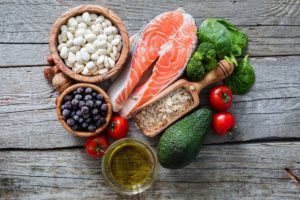
Mindful eating is an effective weight-loss strategy that encourages you to slow down and pay attention to your food, noticing each sip or bite you take. It helps focus your senses on exploring, savoring and tasting your food, and teaches you to follow hunger cues. Put mindful eating into practice with these ideas as you prepare and eat meals. It gets easier over time!
- Practice acceptance. Be aware of critical or judgmental thoughts about food, your eating habits and your body. Concentrate on the moment. Accept your body as it is.
- Make a conscious decision to eat. Before you eat, ask yourself, “How hungry am I right now? Am I eating out of hunger, habit, boredom or emotion?”
- Reserve time for your meal. Don’t eat on the run. If you’re eating with others, involve them in preparing the food to make that time social.
- Avoid distractions while eating. Eat at a table. Turn off the TV and put away your phone, work, books and magazines until you are done.
- Appreciate your food. Start your meal by taking a moment to express your gratitude for the food in front of you.
- Breathe. Before and during your meal, consciously take a few deep breaths.
- Use all your senses to fully experience your food and drinks. Observe the smells, textures, sounds, colors and tastes. Ask yourself how much you’re enjoying the food and how appealing it is.
- Choose modest portions to avoid overeating.
Eat small bites, and chew slowly. Appreciate that your food fills you up and makes you healthy.
Of course, there will be times that you have to rush through a meal to get to an activity or an appointment. But if you can practice mindful eating on a regular basis, it can help you reach your weight-loss goals.





